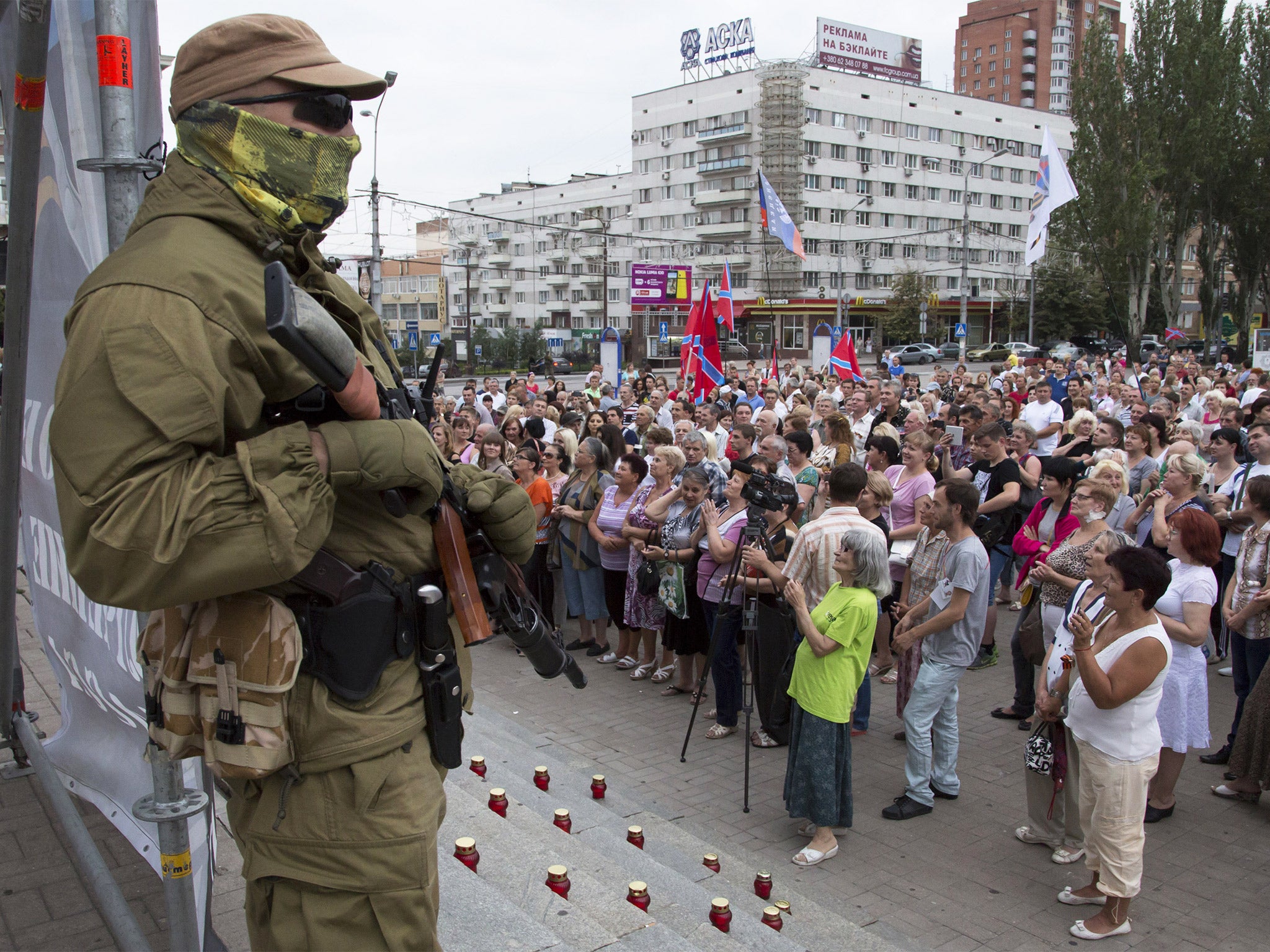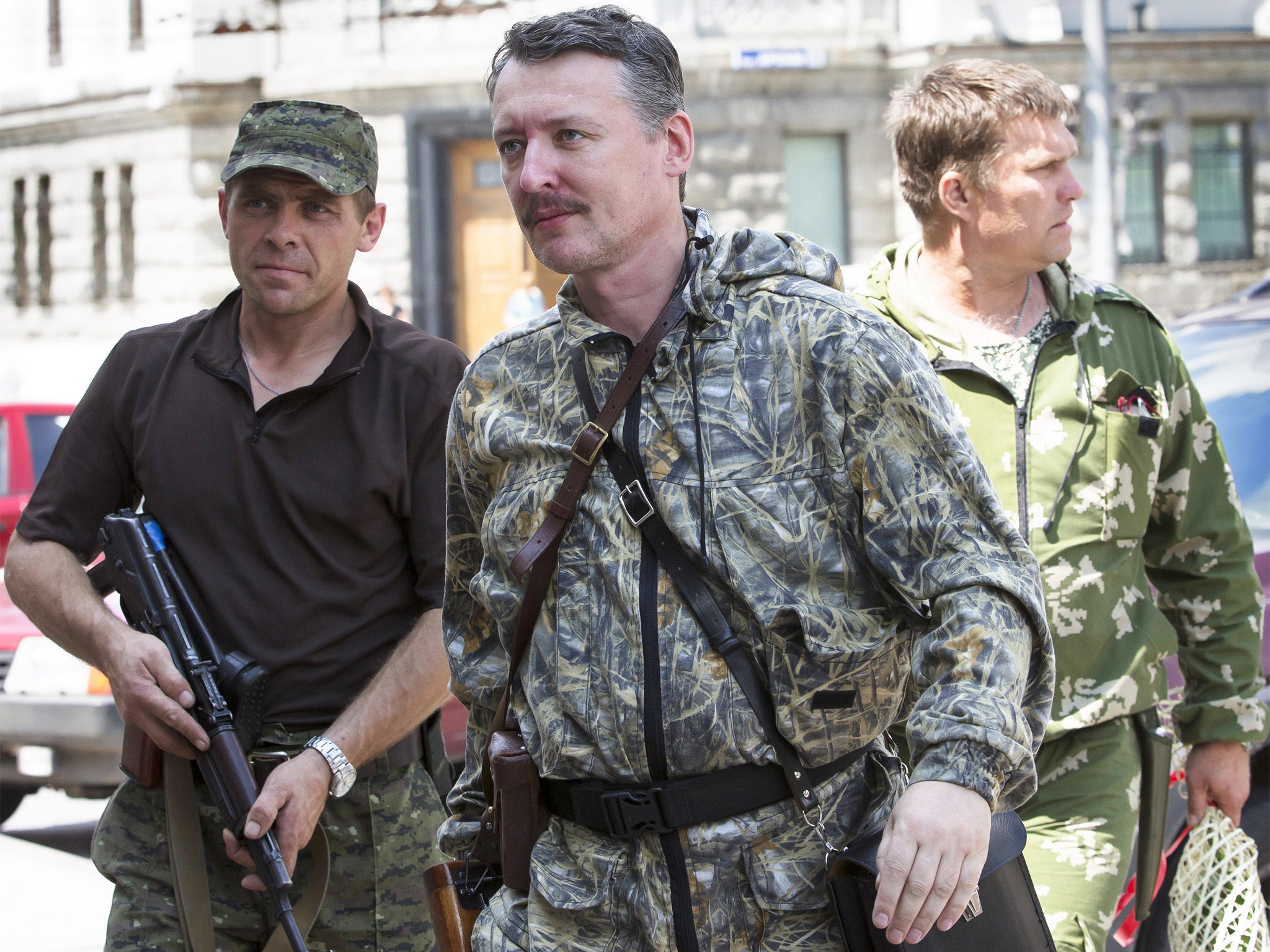Ukraine crisis: Now the city of Slovyansk has been recaptured, will Donetsk be next?
As Ukrainian forces regain control of one major city, people wonder if rebel stronghold Donestsk can hold out

Your support helps us to tell the story
From reproductive rights to climate change to Big Tech, The Independent is on the ground when the story is developing. Whether it's investigating the financials of Elon Musk's pro-Trump PAC or producing our latest documentary, 'The A Word', which shines a light on the American women fighting for reproductive rights, we know how important it is to parse out the facts from the messaging.
At such a critical moment in US history, we need reporters on the ground. Your donation allows us to keep sending journalists to speak to both sides of the story.
The Independent is trusted by Americans across the entire political spectrum. And unlike many other quality news outlets, we choose not to lock Americans out of our reporting and analysis with paywalls. We believe quality journalism should be available to everyone, paid for by those who can afford it.
Your support makes all the difference.In Lenin Square, a series of blue and yellow banners flew from flagpoles. From a large speaker, the volume turned up higher than was entirely necessarily, were being broadcast the day’s business in the national parliament in Kiev.
Until two weeks ago, this city in eastern Ukraine was a stronghold of pro-Russian separatists and Igor Girkin, military commander of the self-styled Donestsk People’s Republic (DPR), had personal oversight of its defences. But then, after weeks of fighting, Ukrainian forces pushed once again into the city and the fighters of the DPR fled. Its two-and-a-half-month control of the city was over.
Today, many people in Slovyansk believe the city of Donetsk, where the DPR has its headquarters, is soon going to experience a similar fate. Whether the fighters there put up a battle or ultimately melt away, as they allegedly did in Slovyansk, remains to be seen.
“I think the situation will be the same as it was here. I think they will run away,” said a man called Ramin, pushing a child’s pushchair across the square on Wednesday afternoon. Ramin, who only wanted to give one name and who said he had a business repairing shoes, added: “They will not fight, for sure.”
Amid the attention focused on the downing of Malaysia Airlines Flight MH17, the horrors at the fields where the wreckage came down and the struggle to have the remains flown out of the country, the context for the alleged shooting of the Boeing 777 has sometimes been overlooked.
But this part of eastern Ukraine remains a zone of bitter conflict with clashes taking place on an almost daily basis. On Wednesday, Ukraine said two of its fighter jets had been shot down by pro-Russian militants, the latest in a series of downing and one of the reasons the US and UK have said they believe militants brought down the Malaysia Airlines flight, believing erroneously it was a Ukrainian military jet.
A spokesman for Ukraine's military operations said the planes were downed near Savur Mogila, a burial mound in the Shaktersky region where a memorial marks ambushes by the Soviet army on occupying Nazis during World War Two.
Later, Ukraine's Security Council said the military jets were hit by missiles that, according to preliminary information, were launched from Russia. “They were shot down very professionally. The terrorists do not have such professionals,” said Andriy Lysenko, the council's spokesman, according to the Reuters news agency.
The city of Slovyansk bears signs of only modest damage caused by the fighting between rebel forces and Ukrainian troops. Several buildings have been destroyed, some markets wrecked by fire. A number of people appear traumatised by the still recent experience.
An 80-year-old woman who gave her name only as Mrs Benderenko, said she had been in Slovyansk all the time and had regularly heard the bomb blasts and shooting. Part of her apartment block had been damaged. She sobbed as she railed against both sides.
“Why are they killing ordinary people. Who is going to look after all those children without fathers?” she asked. “I was here every day it was going. If God wanted me to die, then very well.”
In the aftermath of the capture of Slovyansk, Ukraine’s President, Petro Poroshenko, claimed the victory was a turning point in the army’s efforts to crush the rebels in eastern Ukraine. He had ordered a resumption of military operations after declining to extend a ceasefire. He also suggested that his troops would now push on further.
“My order is now in effect - tighten the ring around the terrorists,” he said on social media. “Continue the operation to liberate Donetsk and Luhansk regions. This is not full victory. But the clearing out of people armed to the teeth from Slovyansk has huge symbolic importance. It is the beginning of the turning point.”
Reports said that the rebel military commander in Slovyansk, Igor Girkin, better known as Igor Strelkov, managed to escape with up to 90 per cent of his fighters. He is now overseeing the defences of Donetsk.
Yet Mr Strelkov has been implicated in the shooing down of MF17. At the same time it was reported that officials had lost contact with the civilian airliner on route to Kuala Lumpur from Amsterdam, he posted on social media that his men had shot down a Ukrainian military plane. As it emerged the plane that had gone down in eastern Ukraine was a civilian jet, he deleted his posts, but not before copies were made.

It remains unclear how many people have been killed in the fighting in eastern Ukraine that has been raging since rebels seized control of a number of major cities in areas close to the Russian border and voiced their intention to declare independence. The rebels, and many local people, say hundreds or thousands have died. They blame the Ukrainain troops.
Meanwhile, the International Committee of the Red Cross urged both sides to both protect civilians and take what measures they can to help search for the remains of those on board MH17.
In a statement, the ICRC also said international law required warring parties to distinguish between military targets and civilian objects such as schools.
“The parties to the conflict must ensure the highest possible standards are met as regards search, recovery, handling and identification of the remains, and must keep the bereaved informed throughout the process,” it said,
In Slovyansk, officials say they are working to restore the city and ensure services such as water and electricity are available. They are also in the process of trying to collate who many people were killed in the fighting.
In an interview in the city’s main administration building, acting mayor Tatiana Maaliy said Slovyansk had been a “dead city”. She claimed people who had fled to escape the violence were slowing coming back and the population now stood at around 70 per cent of what it was before the fighting. She said: “The city is returning to life.”
Join our commenting forum
Join thought-provoking conversations, follow other Independent readers and see their replies
Comments